The King Is Dead – Board Game Review
November 4, 2015 by brennon
The King Is Dead is one of the first board games produced by Osprey Publishing. Designed by Peer Sylvester, a well known game designer, it puts you in the leather boots of a Arthurian Lord or Lady who was once part of the King's court. With Arthur dead, betrayed by Mordred, you must now set about currying favour from the Kingdoms of Britain in order to unite it under your rule.
If you like the idea of tactical manipulation and political intrigue then The King Is Dead is a perfect representation of that where everyone's plans are never truly revealed until the last card is played. If you thought that the political machinations of Game Of Thrones were exciting then see what you think of this game...
The Rules Of The Kingdom
The set up for the game sees you building the Kingdoms of Britain. Two cubes are given to each player to form their Court. You will then place coloured cubes corresponding to the Welsh, Romano-British and Scottish on the table (four in each region). The rest of the cubes are then assigned to the corner of the board known as the Common Pool.
In The King Is Dead each player has a hand of eight cards. On a given round, known as a Power Struggle, the players will choose if they want to play a card from their hand or pass. At it's very basic level if you play a card you continue the round but as soon as everyone passes the round ends, the Power Struggle is resolved, a region is secured, and you move onto the next region on the tabletop.
When a player plays a card they first get to take a cube from any region on the board and add it to their court. They then resolve the action on the card they played if they wish and play passes to the next person. If you don't play a card, you don't bring a cube into your Court.
So what do these cards do?
- The Crown - This allows you to swap the position of two regions so that Power Struggles for them happen at different times. When this is done ONE of those regions may no longer be moved by The Crown card.
- Garrison - This moves two cubes of any colour and swamps them with one cube of any colour in a bordering region
- Ambassador - This allows you to swap one cube of any colour with another cube of any colour in any region
- Settlement - This allows you to take three cubes from the Common Pool for each faction and place them on the board anywhere you wish
- Scots/Welsh/Romano-British - These cards allow you to take two cubes from the Common Pool of that faction and place them in a region adjacent to one they control (each faction beings with one region they control)
The twist in this game is that you only have eight cards and once they are used, they are gone forever. You have eight rounds then in which to use your cards to manipulate the factions on the tabletop in your favour but sometimes a turn will call for you to use two or three cards in order to set up your plan.
So, what is the end goal I hear you say. Well, you don't play as one of these factions but a Lord or Lady who has found support for them in your court. When a Power Struggle is resolved the faction with the most cubes in a region wins dominance there and claims it. You will win if you have the most people in your court of the faction that owns the most regions on the board. Hopefully you can see the tactics already brewing behind the scenes.
Do you use all your cards early in the first four rounds of the game to try and secure yourself for the rest of the game, but fall prey to your opponents later on? Do you keep your cards until you see the state of play and then make a last ditch attempt for control?
You could easily play this game just putting cubes onto a map and seeing where it goes. But, that's where the depth of the game comes in, this is where the complex mind games of The King Is Dead come into play.
A Game Of Intrigue & Risk
The King Is Dead is a very simple game on the face of it. You take cubes into your hand to form a court and then play cards to make sure that your courts winning supporters claim regions. However, if you take too many cubes into your Court then you leave less Nobles and Warriors out there on the tabletop to claim regions. Never mind the fact everyone else might be doing the same thing as you!
The idea here is to see whether or not you can manipulate the board, and your friends, into thinking you have one strategy when you actually want something entirely different to happen. You might start with strong support from the Scots but use that to lull your opponents into a false sense of security and slowly work on building a court of Romano-British followers while sending Scotsmen to ruin others plans under the pretence of gaining control.
One interesting twist in the game is that it has different victory conditions. There is the normal game end, detailed above, but if there are ties within regions then the Saxons claim it. The invading force from across the sea has come and made use of the bickering between Nobles.
If the game ends when too many regions are conquered by the Saxons then the person with the most sets of cubes (so most collections of three Romano-British, Scottish and Welsh cubes) wins because they united the regions together against a common foe. It does sound very Game of Thrones when you think about it, sending the country into war and strife so you can come out looking like the conquering hero.
This delicate balance between wanting to secure support and control of regions whilst also balancing how many of each faction are out there doing this for you, is a sublimely simple mechanic that my friends and I really loved when we got playing it and began seeing the ploys we could enact.
Design & Final Thoughts
The King Is Dead looks the part. The cubes are nicely designed and don't show signs of being a slap dash product. The box control is great too, presented in away that opens like a book (we need more of these!). Each of the cards feels sturdy and well crafted and the board itself is a wonderful piece of Dark Age-style design. You even get a little bag to hold all the tokens and cubes in which, while serving no great purpose, is just a nice addition.
The rulebook is also incredible simple to read through and the whole design smacks of something that you could take to the pub after you have played some games at your local club. It is small enough in size that you could probably fit it quite comfortably on a small pub table.
If you like well designed, no frills, Euro games then this is going to appeal to you. You could make an argument for this needing dice and plastic models as troops - but importantly this isn't about battle RISK style - it's all about the mind games. I think taking it back to this Euro level - almost as if it was sitting on an Arthurian table - makes for a wonderful simple experience where the interaction between players is important and it does well even without an Ameritrash layer on top of it.
While you can't make deals in the game I think table talk could well be something to encourage here. Trying to bluff and deceive is something we tend to do a lot in my group. Add to that the fact that the game set up changes each time, due to the way cubes are added to the table, you won't ever be playing the same way twice (well, for a long time anyway).
The design of the game could be transplanted into other eras and genres. Maybe it is Game of Thrones, fighting over Westeros, or Alexander's Empire as his Generals cut it up. You could even see this being space themed as you divide up a sector. It works really well with the Arthurian theme though and you can feel the tension ramp up as you play.
There is also a Mordred version of the game which is harder and designed for expert play. This adds a wild card of black cubes into the mix who are on no-ones side but can bring the game to ruin. This brings in a semi-cooperative nature to the game but also gives you different options for victory. Maybe you can use the threat of Mordred to bring your claim to fruition?
If you like tactical Euro games you will enjoy this from Osprey. It's a great outing for the company and could well be a top Euro game in my collection for a while.
You can download the rules for the game HERE.
What do you think of The King Is Dead?
"If you thought that the political machinations of Game Of Thrones were exciting then see what you think of this game..."
Supported by (Turn Off)
Supported by (Turn Off)
"The idea here is to see whether or not you can work the board, and your friends, into thinking you have one strategy when you actually want something entirely different to happen..."
Supported by (Turn Off)









































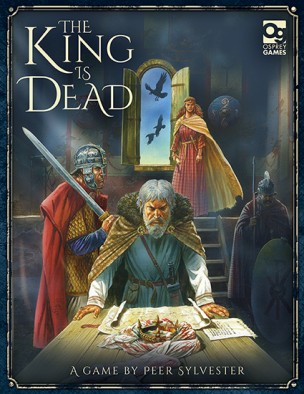
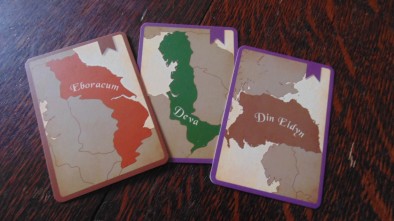
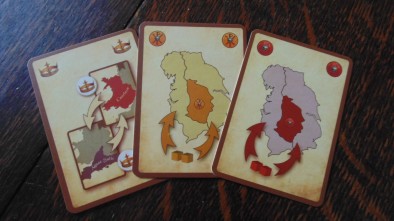
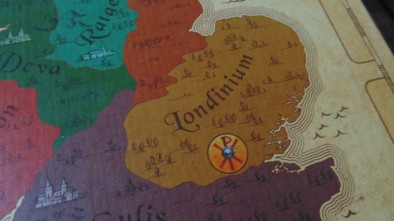
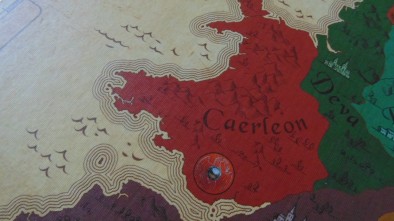
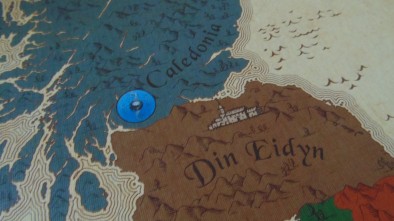
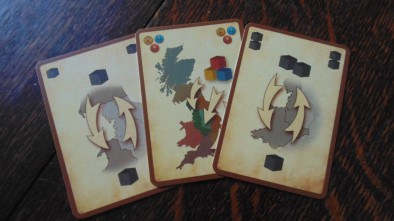
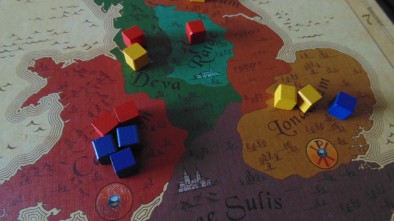
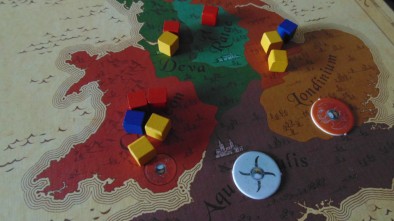
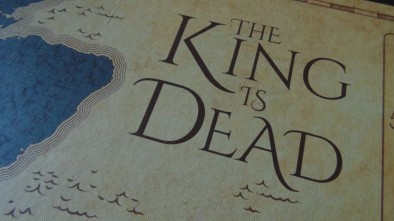

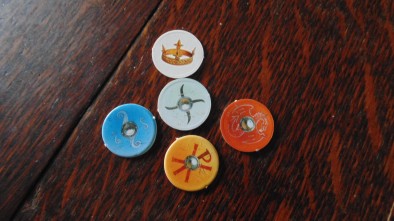
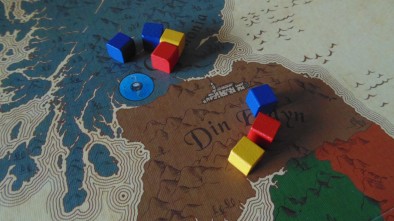


































Despite not typically playing “cube-builder” games, the heavy historical angle on this title, and the fact that it’s from Osprey, might make it an exception on my shelf. 😀
I think the intrigue nature of the game and the Arthurian theme really bring it to life.
Played this last Friday night.. A really fun game when ypu get the hang of it requires a couple of plays to really get the hang of it
True – I played my first game a week or so ago and immediately had to play it again after some table talk with friends about how we could have done x or y to make things work out differently.
Turned out my friends girlfriend had played us both for fools!
Bought this game today, and reading your review I bet that I made a good purchase.
I think you’ll really enjoy it – lots of fun. Simple to learn but hard to master is an overused phrase but it makes sense in this case. You see so many tactics each time you play.
i want to play it again its a devious game…lol
Definitely playing this, thanks for the review!
No worries – hope you enjoy the game!
Would be nice if they released a version with minis to use as well, or an upgrade of minis